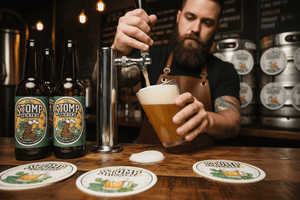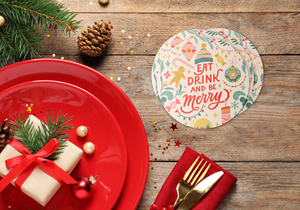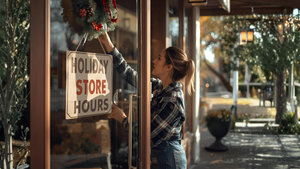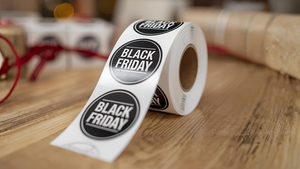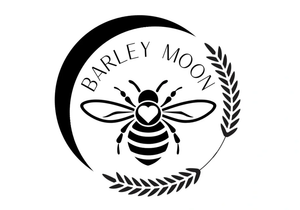Top CBD Labeling Mistakes You Need to Know (and Avoid)

CBD products have become widely popular since the legalization of cannabis. Excellent news for CBD producers and distributors, yet creating successful label designs for your products comes with a few unique challenges. While the legal requirements and federal regulations surrounding CBD labels can be a lot to make sense of, creating compliant labels for your products needs to be a top priority.
Learn how to avoid the most common mistakes CBD manufacturers make when designing their labels and packaging. Let’s dive in.
Why are CBD Labels So Hard to Design?
The cannabis industry, including CBD, is still very new. Both federal and state governments are still trying to regulate cannabis and its products. So while a new industry is always exciting to jump into, from a business perspective, the fact that legal regulations and requirements are still in flux makes this a confusing time to be a CBD brand.
Labeling requirements and legal regulations surrounding CBD, its products, and the health or benefit claims you can make vary quite a lot from state to state. It’s challenging to stay well informed on what your labels can and can’t have. And it’s also challenging to fit in all the necessary information onto a relatively small label, while also ensuring that label catches serious attention from prospects. CBD producers must juggle legal compliance and marketing. And that is no small feat.
5 Most Common CBD Label Mistakes
Government label requirements specific to CBD products can be difficult to find, and these are often updated, modified, or otherwise changed. This can be both frustrating and risky. Frustrating because you have to dig to find the information, and risky because the compliant label you design today may be out of date by tomorrow.
With the ever-evolving local, state and federal CBD regulations and requirements, labeling mistakes happen. Below are the most common, and how you can avoid them when creating your own CBD label design.
1. Printing CBD Labels with Incorrect Legal Information

This is arguably the biggest mistake you can make, and also the most common. CBD manufacturers must adhere to general FDA labeling requirements. Among other things, your label must include:
- Sure, your product obviously contains CBD. But you also need to note any other ingredients in it as well. You don’t have to give away the amounts to any proprietary blends, but full transparency of ingredients is a legal requirement.
- Net weight. This tells your customers how much product is in the package. This is different from gross weight, which would be the weight of the product and all packaging - and your customers don’t really need to know that.
- Active CBD per serving. Active or activated CBD, also sometimes noted as CBDA, may be more potent in strength than CBD that hasn’t been activated. It’s important to note if your product contains CBDA and how much is delivered per serving.
- Name of both your product and your company. Many labeling requirements revolve around transparency. The name of your product, your company and any distributors need to be easy to read and find on your label.
- Health and other benefit claims that adhere to FDA regulations. In the image above, any label that promotes a product as being “organic,” or made with organic ingredients, will need to be able to substantiate that claim.
Creating labels with incorrect or false legal information is a quick way to get your product pulled off the shelf – and nobody wants that!
2. Making False or Unapproved Health Claims

Good marketing tells you to play up the health benefits of your products. But when it comes to CBD, making unapproved or downright false health claims will land you in hot water. Before you add anything resembling a health claim to your CBD label, make sure you have actual facts to back it up. And if you don’t have evidence to support your claim? Take it off your label.
Going a step further and adding a disclaimer somewhere on your label or product packaging is another step you can take in order to prevent any misconceptions about the health benefits of your CBD products. Take a look at how the brand Find Your Fulcrum above incorporated a disclaimer into their label design.
3. Overselling CBD and its Benefits

Leaning into the idea that CBD is the next miracle product, able to cure everything from cancer to baldness, won’t just land you in legal trouble. It’s a quick way to make sure your brand doesn’t outlast the current CBD boom. Honest Paws, shown above, is clearly for your four-legged friends, offering everything from joint support to calming supplements. While these products contain CBD, they’re also being marketed to a certain kind of consumer.
Selling CBD products still means creating a strong brand for a loyal customer base. Create labels that incorporate but do not focus entirely on CBD, and focus on the overall value your products and brand bring to your customers.
4. Forgetting to Include Active CBD Per Serving

All CBD product labels need to include how much active CBD is present in each serving of the product. This information must be displayed front and center on your label. Medical Mary gives nearly half of their front facing label to displaying how much CBD their product contains both overall and per serving.
5. Using Hard-to-Read Fonts

Sound label design includes using fonts that are easy to read. Sounds obvious, right? It’s as practical as deciding whether or not to order labels in bulk (hint: with an industry as changeable as this, small batch ordering saves you both money and the hassle of disposing of old, outdated labels).
Yet the FDA has some fairly strict text and size requirements for labels in general – and even different rules for different parts of the same label, as you can see in the picture above. Can this be a headache? Yes indeed. Is it worth popping an aspirin and getting it done? Totally.
How to Avoid the Most Common CBD Label Mistakes
The best way to avoid any of the common labeling mistakes listed above is simply to take your time and do your due diligence. Spend the time and the money to learn about legal requirements and regulations at the local, state, and federal levels. Research, attend seminars and trade shows, register with trade organizations or other groups – explore every avenue available to stay as informed and up to date as possible.
And remember: learning about CBD label design requirements doesn’t stop once you design your label. This industry is in an almost constant state of growth, and that means the best way to avoid future CBD label mistakes is to stay informed about both the industry and the legal requirements that govern it.
Print a Compliant CBD Label with Stomp
Successful product label design is always a challenge. Brands need labels that look good, inform potential customers, and comply with the legal requirements regulating their products and industry. Creating a CBD label design that looks good and keeps your business out of legal trouble may sometimes feel like an insurmountable task. But it’s worth the time and effort involved to ensure your design adheres to regulations.
Once you’ve created a label that satisfies both your legal and marketing departments, you need a printing company that understands the unique challenges CBD manufacturers face.
At Stomp, we know just how important the right label is for your products and your brand. With our easy to use and efficient design tool, wide variety of label materials and sizes, and stellar customer service, your CBD label designs are in good hands. Contact us and get started today.
- Marketing Team

